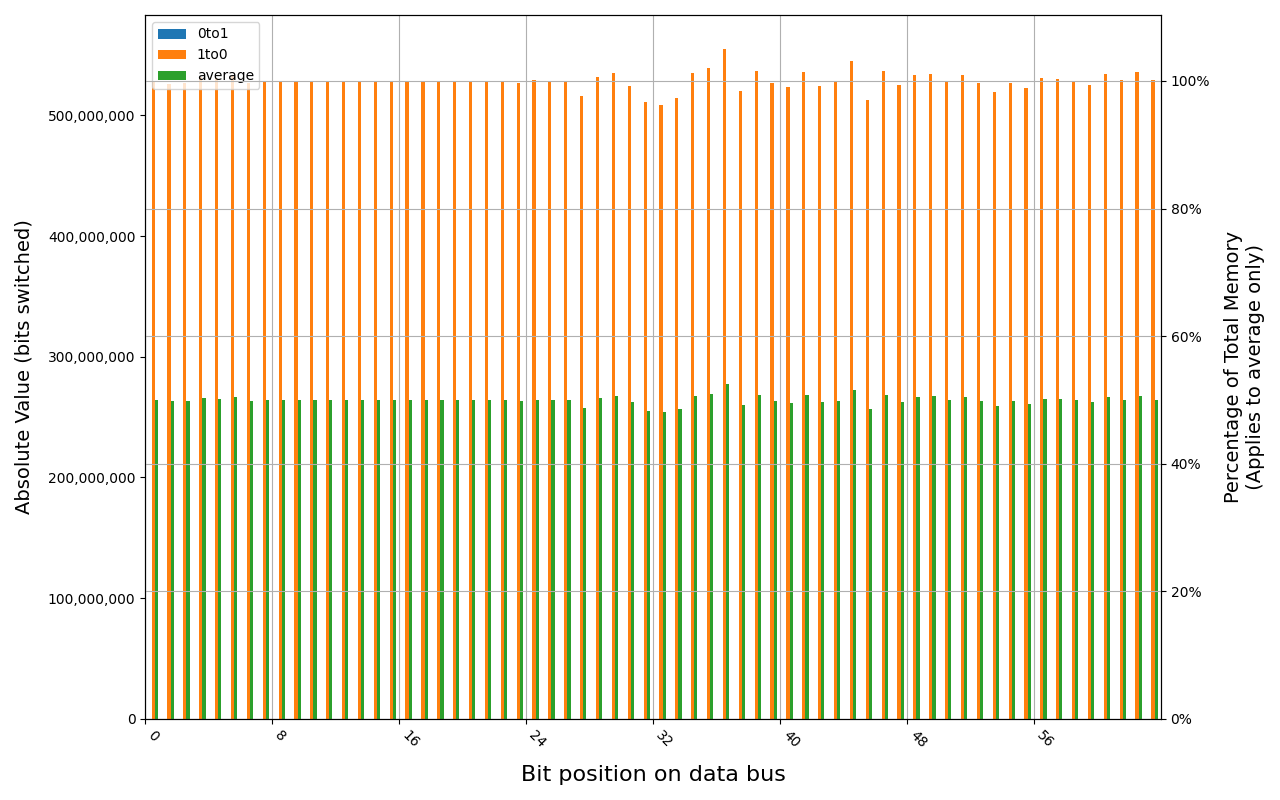This is a summary of research of RAM data remanence times. First post has the description of goal, methodology and implementation of tool used for this research, as well as some DRAM theory. Second part presented revision of testing application and methodology, testing results, and finally an impact on readability of the data persisting.
General recommendation
General recommendation regarding leaving your device (with DDR4/DDR5 non-ECC RAM) unattended after shutdown, considering the risks of cold boot attack:
- once device was shutdown, and left indoors at a room temperature, it’s
unlikely that any useful data can be extracted after < 10s for most memory
modules,
- for some specific memory modules this time may be higher; we have came across one specific module in which case it would be recommended to wait 2 minutes until the data decays to a sufficient extent,
- therefore the recommendation would be to wait 2 minutes until leaving device unattended, unless you have done prior testing of your specific setup using e.g. this test app.
Graceful vs forced shutdown
For practical application, there is no significant difference in RAM decay rate
between graceful (shutdown system command) or forced (cutting off the power)
shutdown.
Impact of the notebook battery
Once notebook is shutdown (either via shutdown command, or via power button),
the presence of battery does not mean that the data in RAM is still being
refreshed. It can be only refreshed when notebook is powered on, or in suspend
(S3), not in shutdown state.
Recommendation: whether the battery is present in the notebook, or not, it does not negatively impact user concerned of the cold boot attack. There is no significant difference in RAM decay rate here for a practical application.
DDR4 vs DDR5 (non-ECC)
For practical application, there is no significant difference in RAM decay rate between DDR4 and DDR5 modules.
ECC memory
Reading from uninitialized ECC memory would cause errors to be detected by the controller, which in turn would stop the machine execution. To avoid it, whole memory is written with a predefined pattern, usually consisting of all zeros, during firmware initialization.
Because of that, testing on ECC memory doesn’t provide usable results (only
1to0 transitions, always in roughly 50% of total memory), as seen in this
graph obtained for Supermicro X11SSH:

Memory clearing
For certain use-cases, memory clearing feature can be implemented in boot firmware. It makes the initial boot longer, and must be implemented on the machine where the modules would be placed for data extraction.
Therefore, it might prevent these types of attacks, where memory modules are not swapped to another machine.
Summary
This research has been supported by Power Up Privacy , a privacy advocacy group that seeks to supercharge privacy projects with resources so they can complete their mission of making our world a better place.
Unlock the full potential of your hardware and secure your firmware with the
experts at 3mdeb! If you’re looking to boost your product’s performance and
protect it from potential security threats, our team is here to help.
Schedule a call with us
or drop us an email at contact<at>3mdeb<dot>com to start unlocking the hidden
benefits of your hardware. And if you want to stay up-to-date on all things
firmware security and optimization, be sure to sign up for our newsletter:

